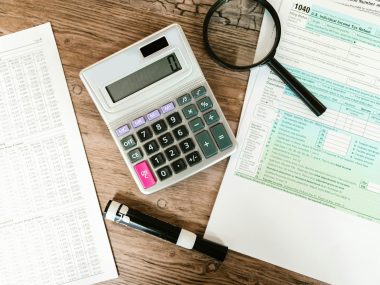Creating a budget is a vital step towards financial independence, especially for beginners navigating the complexities of personal finance. A budget is your blueprint, guiding your spending and saving decisions. However, the challenge often lies in adhering to this well-planned strategy.
If you’re a novice looking to take control of your finances, How to Stick to a Budget for Beginners is here to lead you through each step with clarity and confidence.
Step-by-Step: Kickstarting Your Budget Journey
To begin with, gain a comprehensive understanding of your monetary inflows and outflows. Sticking to a budget for beginners starts with knowing exactly where your money goes.
Review your pay stubs or profit statements to ascertain your income. Next, sift through your bank statements, bills, and receipts to itemize your expenses. Highlight any spending patterns—perhaps that daily coffee run or the often unnoticed subscription services accumulating each month.
- Assess current income, itemize all regular expenses
- Note your spending habits, identifying unnecessary expenses
- Use this data to inform your budgeting goals
Remember, awareness is the first step toward change—pinpoint where adjustments are necessary to free up cash for saving and investment.
Set clear, realistic goals.
Financial goals are the cornerstone of personal budgeting. As a beginner, your objectives need to be achievable and well-defined. Are you budgeting to clear a debt, fund your education, or save for a down payment on a home? Whatever your aim, specificity is key.
- Define what you are saving for and give it a timeline
- Be realistic—overambitious goals can lead to frustration
- Prioritize your goals, distinguishing between wants and needs
These goals must resonate with you. This connection ensures that you’re more likely to stick to your budget.
Create a budget plan.
Transform your financial analysis and goals into an actionable budget plan. Divide your expenses into necessary (rent, food, utilities) and non-essential (dining out, entertainment) categories. Allocate your income to cover essentials, with the remaining funds designated toward your financial objectives.
- Build your budget with both fixed and variable expenses in mind
- Allow some flexibility for unexpected costs
- Ensure your plan is aligned with your income and goals
A budget only works if it reflects your financial situation—strive to balance frugality and practicality.
Track your spending
The secret to sticking to a budget is tracking your daily spending. This vigilance helps you catch any deviations from your plan early on.
- Record every transaction, no matter how small
- Use apps or a simple spreadsheet to keep tabs on your spending
- Regularly compare actual spending against your budget
This discipline in tracking helps refine your spending habits over time, bolstering your budget adherence.
Adjust as needed
Life is unpredictable, and your budget must be flexible to accommodate changes—a pay raise, an unforeseen expense, or a shift in financial priorities.
Periodically review and tweak your budget.
Adjust for changes in income or expenses, staying aligned with your goals
Use these reviews as opportunities to improve your financial knowledge
Remember, a budget is a dynamic tool that should evolve with your financial journey.
Tailoring Your Budget to Your Life
Each individual’s lifestyle commands a unique budget makeup. To determine suitable categories, look back at bank statements, assess your income, and ponder your immediate and future financial objectives.
- Break down your spending history to uncover routines and priorities
- Align your budget categories with your known expenses
- Set up categories for infrequent but substantial costs like car maintenance or holiday gifts
Understanding your spending landscape is the groundwork for crafting a budget that feels natural to your lifestyle.
Consider your income sources.
Your income fuels your budget, so capturing all streams of money coming in is crucial.
- Account for your primary job earnings and any side hustles
- Include passive income or investment returns if applicable
- Adapt your budget to the ebb and flow of your income pattern
- This comprehensive view ensures a realistic and manageable budget.
Reflect on financial goals.
Whether saving for retirement, an emergency fund, or a dream vacation, your financial goals are the pillars of your budget.
Match your budget categories with your short-term and long-term goals
Provide adequate funding towards each goal by categorizing expenses effectively
Use your goals as a motivational tool to keep your spending in check
With each goal reflected within your budget, you create a roadmap to financial success that caters solely to you.
Customize categories for your lifestyle.
Personalize your budget categories to mirror your unique interests and habits.
Create distinct segments within your budget for the areas you value—fitness, travel, and education.
Leave room for flexibility by introducing a ‘miscellaneous’ category for uncategorized expenses.
Re-evaluate and adapt these categories as your lifestyle evolves
Your budget should be as individual as you are, crafted to support the life you live and aspire to.
Be flexible and adjust over time
The ability to adjust is a vital feature of any successful budget.
Review your spending and savings regularly to ensure alignment with your lifestyle.
Tweak categories and allocations to remain relevant and effective
Allow your budget to grow and change as you do
Embracing adaptability is central to maintaining budget discipline in the face of life’s constant changes.
Tools to Empower Your Budgeting Effort
Mint
Mint is a favorite among beginners for its ease of use and comprehensive features.
Automatically tracks and categorizes transactions
Alerts for bills and offers valuable savings tips
Helps create a budget that syncs with your financial goals
Whether you’re new to budgeting or looking to refine your process, Mint can simplify the task.
YNAB (You Need A Budget)
YNAB teaches its users to give every dollar a role, a proactive method of managing personal finances.
Emphasizes accountability and planning in expenditure
Provides detailed reports to gauge financial health
Encourages users to live within their means and avoid new debt
For those committed to a zero-based budgeting approach, YNAB is an invaluable tool.
PocketGuard
As the name suggests, PocketGuard helps safeguard against overspending.
Shows how much money you can freely spend after all obligations
Categories and organizes expenses seamlessly
Offers insights into spending patterns, helping you find ways to save
Beginners will appreciate PocketGuard’s straightforward approach to budgeting.
Google Sheets or Microsoft Excel
For those who prefer a more hands-on management style, spreadsheet software like Google Sheets and Microsoft Excel can be incredibly powerful.
Offers an array of templates to get started or you can create your own
Full customization options to suit any budgeting need
Spreadsheets require user input, reinforcing budget awareness
With these tools, you can create a personalized budget system that perfectly fits your preferences.
Goodbudget
Goodbudget modernizes the tried-and-true envelope budgeting system for the digital era.
Divide your income into virtual ‘envelopes’ for each spending category
Prevents overspending by keeping your money allocated
Supports sharing and syncing across multiple devices for households
For beginners who appreciate a visual representation of their finances, Goodbudget can make budgeting more intuitive.
Identify long-term financial goals.
Having long-term financial aspirations clearly in your sights can be a powerful deterrent against impulsive, unnecessary spending.
Let your goals guide your spending decisions, asking yourself whether a purchase aligns with them.
Keep reminders of your financial goals in view—visual aids like a savings chart can be impactful.
You can dodge many potential financial missteps by maintaining focus on your long-term objectives.
Allow for discretionary spending.
Allotting a small budget to discretionary spending can provide an outlet for impulsive urges without compromising your financial plan.
Include a ‘fun money’ category within your budget for small indulgences
Set a strict limit to this spending and track it as rigorously as essentials
This controlled freedom can make all the difference in sticking to your budget in the long term.
Track spending regularly
Regular review of your spending patterns not only keeps you on budget and allows you to recognize and celebrate your successes.
Make a habit of checking in with your budget, perhaps weekly
Use this time to adjust spending, ensuring continual alignment with your budget
These regular check-ins reinforce your commitment to your financial plan and highlight your progress.
Find inexpensive or free hobbies.
Expensive pastimes can often derail a budget. Engaging in low-cost or free activities minimizes the risk of overspending for entertainment.
Explore hobbies that leverage what you already have or can do for free
Use community resources such as libraries, parks, and free events
In seeking out financially responsible entertainment options, you secure your budget and quality of life.
Use financial tools or apps
Leverage the power of technology to aid your budgeting discipline.
Set spending alerts within your chosen app to keep you aware of limits
Monitor accounts regularly to ensure you stay within budget
With this digital assistance, you’re better equipped to resist splurging temptations.
Remedies for Budgetary Slip-ups
Review and Adjust Budget
When a budget category consistently exceeds its limits, it’s time to reassess your strategy.
Revisit your budget plan and consider if an increase in allocation is warranted.
Possibly redirect funds from underutilized categories to bolster the overspent area.
Adapt your budget to reflect real-life spending, ensuring its relevance and utility.
Track Spending Habits
Understanding the ‘why’ behind your overspending can inform effective changes.
Dig into the details of your spending to pinpoint where and why you overrun your budget.
Identify patterns and triggers for overspending, such as emotional spending or social pressures.
Self-awareness is a potent tool in reforming any problematic spending behavior.
Implement Spending Cuts
Finding ways to reduce expenses within the problematic category is essential to getting back on track.
Seek alternatives that offer significant savings without impacting quality of life.
Take advantage of sales, coupons, and discounts to stretch your budget further.
Consider eliminating non-essential spending where possible
Every dollar saved is a dollar that can go towards achieving your financial goals.
Utilize Financial Tools
Apps and software can help keep your spending within bounds, providing timely alerts and vital spending insights.
Configure app notifications to alert you as you approach category limits
Review the app’s spending analysis to gain additional perspectives on your habits
Armed with this information, you can make more informed spending decisions, keeping you in line with your budget.
Set Short-Term Goals
Creating achievable, time-bound goals for your budget can help instill disciplined spending habits.
Break down larger financial objectives into smaller, manageable targets
Celebrate each victory, reinforcing your positive budgeting behavior
Adjust goals as required to ensure consistent progress toward your financial aspirations
These short-term achievements will furnish evidence of your success, boosting your confidence and commitment to your budget.
Thrive Within Your Means
As you embark on your budget-keeping journey, remember that a budget is more than just numbers—it reflects your values, goals, and the life you envision for yourself. While the principles you’ve just explored lay a foundation, the true art of “How to stick to a budget for Beginners” is in balancing your financial constraints and life’s pleasures.
By following this roadmap, you’re setting the stage for a responsible, fulfilling financial life. From the first step of analyzing your current situation to the ongoing management with digital tools, budgeting is within your grasp.
As your goals evolve and your financial literacy deepens, your budget will become not just a tool, but a trusted ally in your quest for financial freedom. Embrace the process, adjust when needed, celebrate small victories, and watch as your newfound financial discipline carves a path to success that is uniquely yours.










